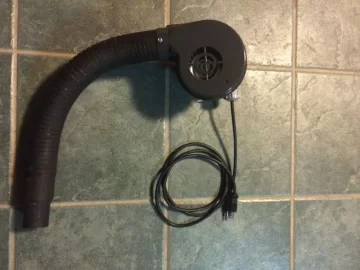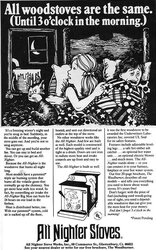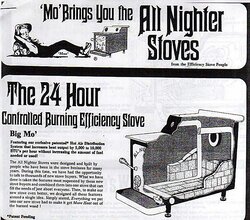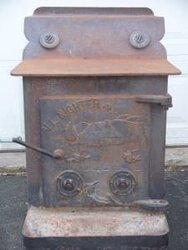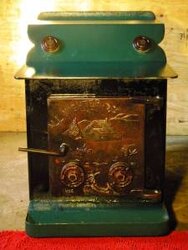If this is your first burning experience, you're doing good! That's the normal burn for most well built stoves of that era, so you can expect that kind of performance from most any of them as long as you're comparing the same firebox size. Getting heat to rise above the stove is the right thing to do, but make sure the cooling air has a way to drop back down to be recirculated. Best at the other end of building away from stove. That may help with circulation on the first floor. An insert or stove in front of hearth would be best for that level. The All-nighter was built more for hearth installation with the very short legs to get under the fireplace opening. They use an insulated pad under the bottom brick, possibly containing asbestos. Other stoves had legs 6 inches or longer to raise the bottom from floor requiring less floor protection.
The size of your chimney flue makes a huge difference in the heat output of any stove. It also stays much cleaner when it's the right size and insulated burning the way you do. The object is to keep the flue gasses above 250* all the way to the top to prevent water vapor from combustion from condensing and allowing smoke particles to stick. A larger diameter flue allows the exhaust gasses to expand and cool, and move slower. So you want to make sure the chimney flue diameter inside is the same size as stove outlet. The stove will be able to heat more square area with more heat inside the building than needed up the chimney. Making the blower work will also even out the heat in the basement. If your floor plan allows the rising heat above stove to rise up nearby stairs, try to get the heat to rise up to the first floor away from the stairs. This will force the air to circulate through the first floor before it can rise up to the next level.
Putting the heat in the basement is fine (and keeps the wood mess down there) if the walls are insulated as well. If they are block walls contacting soil, you need about 1/3 more BTU to heat that area. So insulating the basement walls allows a lot more heat upstairs.
Any Insert is going to require an insulated liner in the existing chimney, so you may want to do everything you can to increase BTU and circulation before going the expense of a second heat source. Depends on the entire square footage you're heating. 3000 sf is all you can expect from the Moe IF it's the Big Moe that measures 41 1/2" overall length with ash shelf.
Burning 24/7, I've found the best way to handle ash without leaving the stove go out is removing the ash that burns down in the front close to air intake each day and rake the charcoal and glowing coals along with some ash ahead to kindle the next fire on.
View attachment 156683 View attachment 156684




